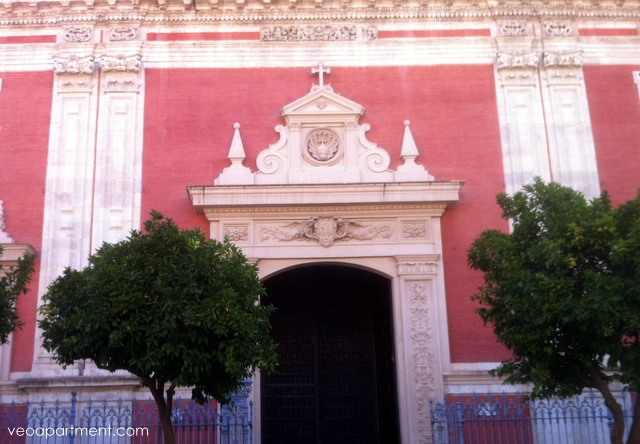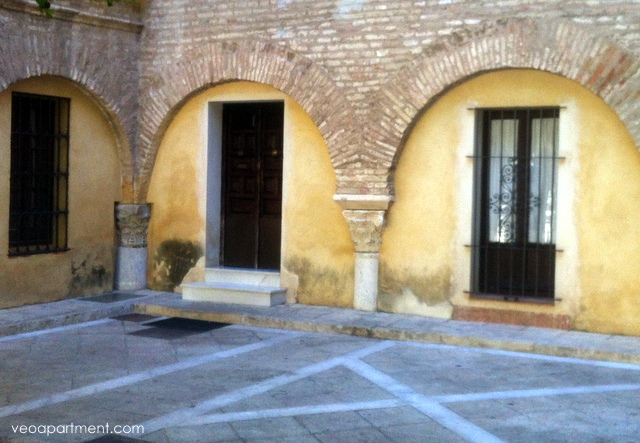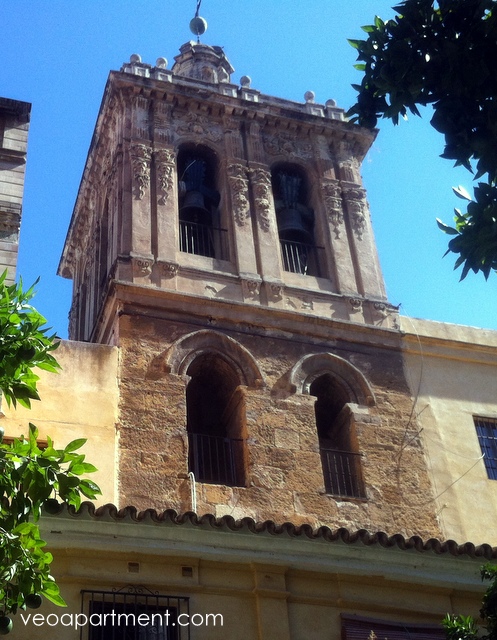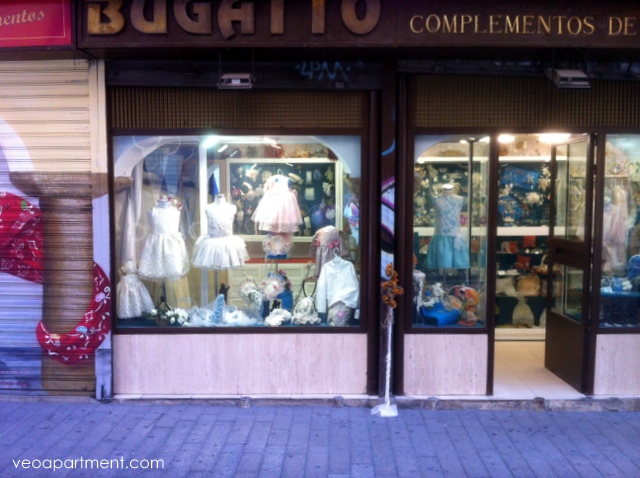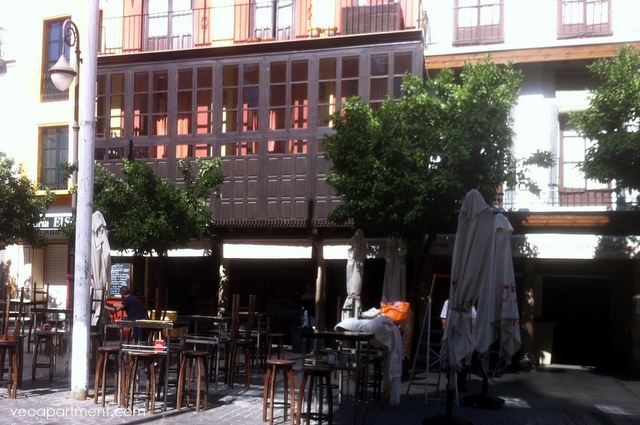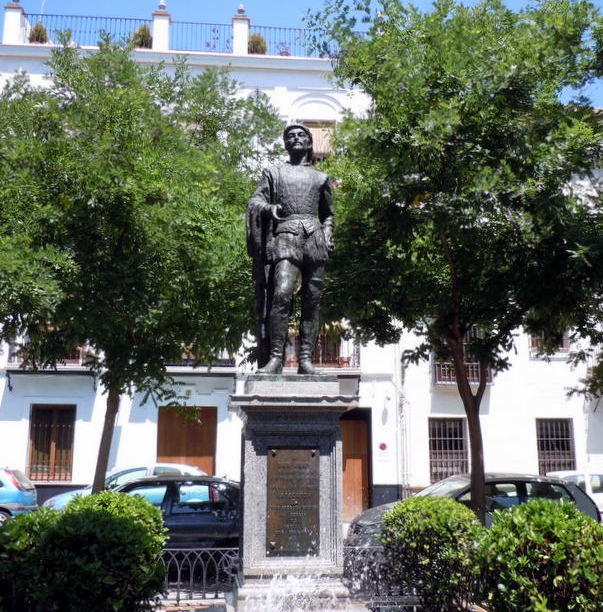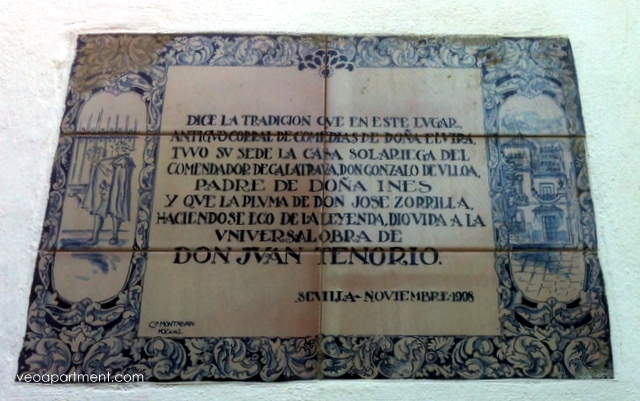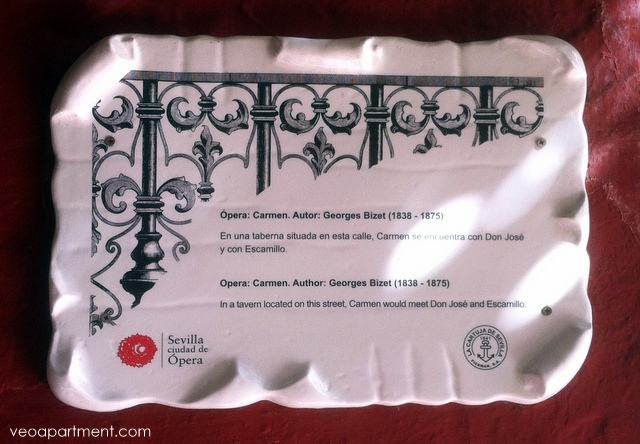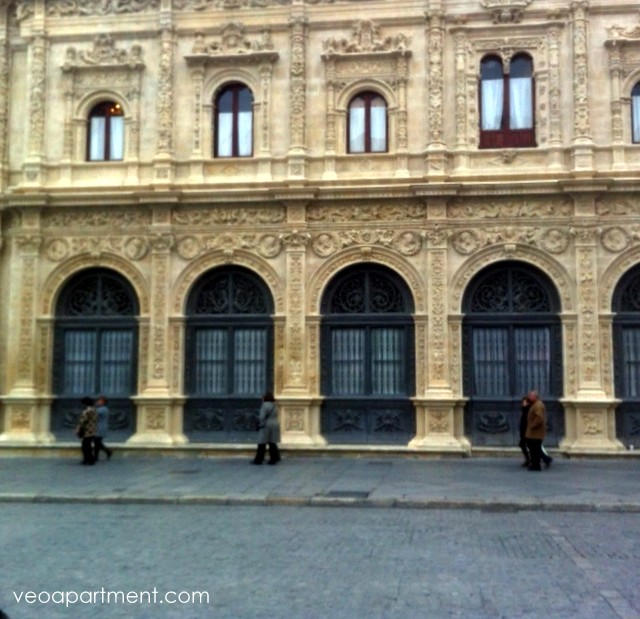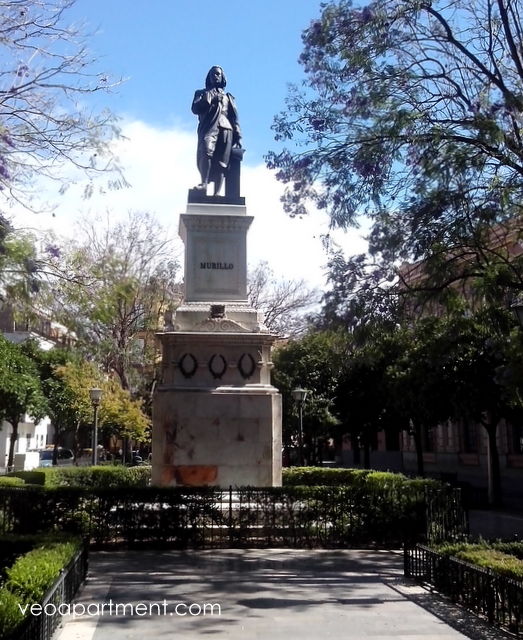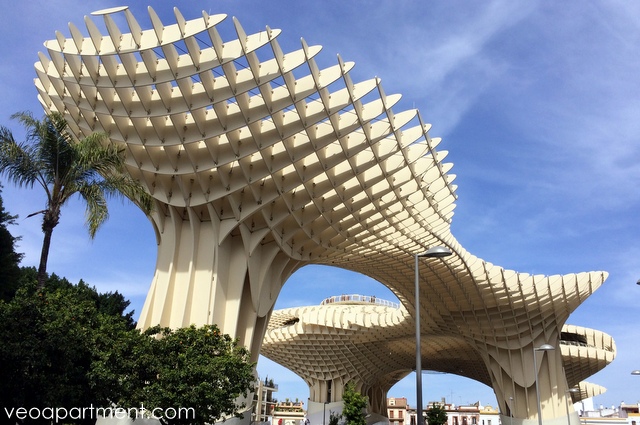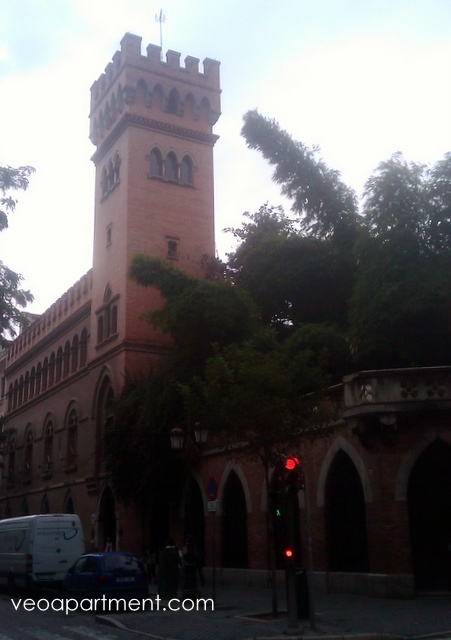The Santa Cruz is the best known of Seville’s old neighbourhoods, and corresponds roughly to the late mediaeval Jewish quarter. It’s a major part of the oldest section of the city, but although it’s still based on the old Roman street layout and has many authentically old buildings, it actually owes much of its picturesque charm to the renovations and general prettifying that began in the Napoleonic era and peaked during the preparations for the 1929 Spanish American exhibition.
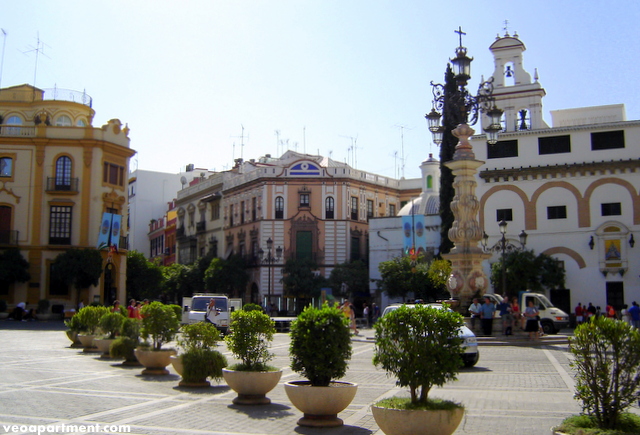 Plaza Virgen de los Reyes
Plaza Virgen de los Reyes
La Plaza Virgen de los Reyes (Virgin of the kings) is the classic square behind the Cathedral and in front of the Barrio Santa Cruz. It’s enclosed by three of Seville’s most important historic buildings, the cathedral (including the Giralda tower), the Archbishop’s Palace and the former Hospital of Santa Marta that now houses the Convent of the Incarnation. Although these buildings date back 500 years or more, the square itself was only created in the 18th century by the demolition of the Church’s administrative buildings within it, and its modern form was achieved with the remodelling of the entrance to Mateos Gago in the 1920s. The fountain and ornamental streetlight in the centre was added for the 1929 Spanish-American. Spend a few moments in the shade of the orange trees enjoying the view of the tower and doing some people watching.
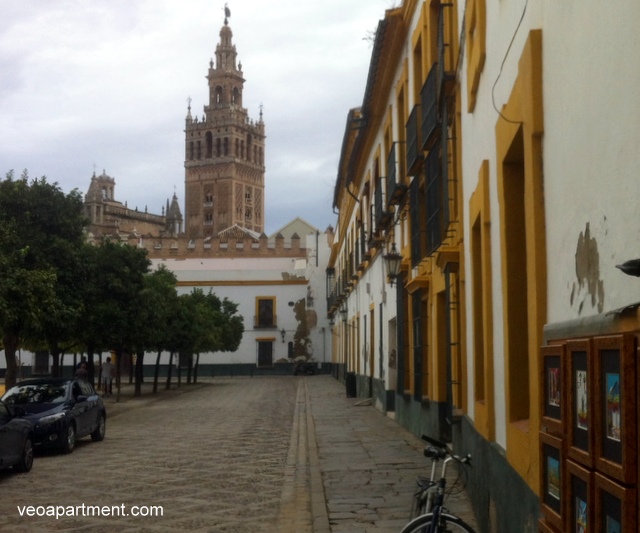 Classic view of the Giralda from Patio de Banderas
Classic view of the Giralda from Patio de Banderas
From Los Reyes take a short detour into Plaza Santa Marta, the little square at the end of alley behind the statue of the Pope, and discover an oasis of peace and quiet. The cross in the centre dates to 1564, but was only brought here in the early 20th century from the old hospital of San Lorenzo in the Macarena. The door to the right is the back entrance to the Monastery of the Incarnation.
Next to Los Reyes is the “second square”, La Plaza del Triunfo, which is effectively the World Heritage centre, with the Cathedral, the Alcázar Palace and the Archivos de Indias on three sides, and the Casa de la Provincia on the fourth. The walls are over a thousand years old, and were once the outer walls of the city. The square takes its name from the small monument in front of the Archivos, erected in 1757 to commemorate the Cathedral surviving the Great Lisbon Earthquake. Like many others the square was remodelled in the early 20th century, and the monument to the Immaculate Conception was erected at this time.
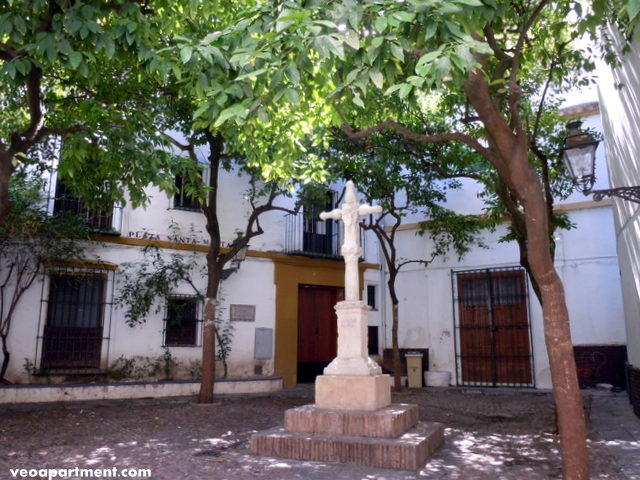 Plaza Santa Marta
Plaza Santa Marta
Through the archway beside the square is the Patio de Banderas (Courtyard of the Flags), where the Kings of Spain once greeted foreign ambassadors. The rectangular promenade around the outside is formed by two rows of orange trees, but the fountain that used to grace its centre has disappeared since the recent archaeological investigations into the earliest stages of the Palace’s history.
Passing up the street alongside the wall brings you to the Plaza de la Alianza (formerly the Plaza del Pozo Seco or dry well), a charming little square with a simple central fountain, and a couple of bar terraces from which to enjoy it.
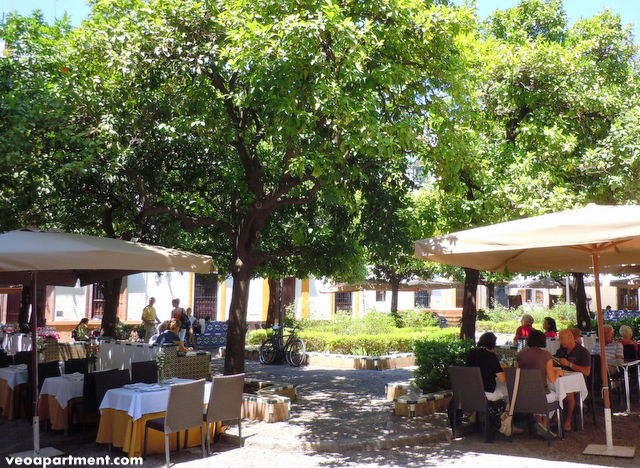 Plaza Doña Elvira
Plaza Doña Elvira
Follow the wall to reach Plaza Doña Elvira, possibly the most picturesque little square in Seville, and certainly one of the most frequented by tourists. During the day it seems to be almost full of restaurant tables and chairs, but don’t let that put you off enjoying its ceramic benches, fountain and orange trees. It’s supposedly the birthplace of Doña Elvira, the impossible love of Don Juan.
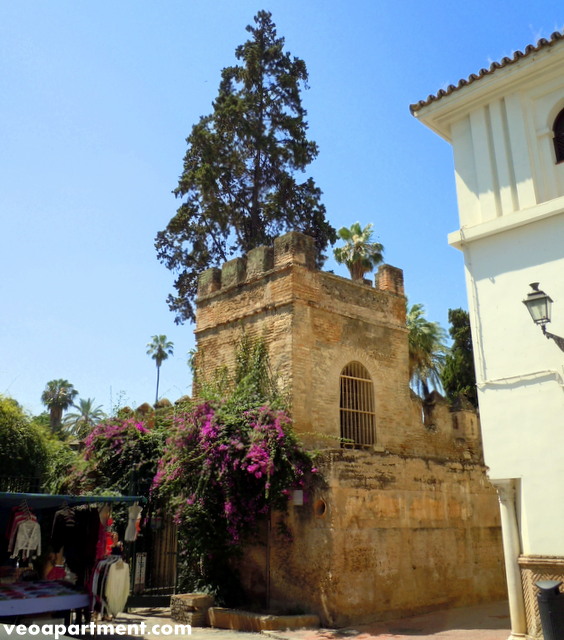 Plaza Alfaro
Plaza Alfaro
Carry on along the wall through Life Street and Water Street, and past the Washington Irving house, and you’ll come to the Plaza Alfaro, the little square at the entrance to the Murillo Gardens. Look for the Moreton Bay fig trees just inside the gardens, the water pipes in the exposed end of the old wall, and the circular balcony on the corner of the Casa Palacio.
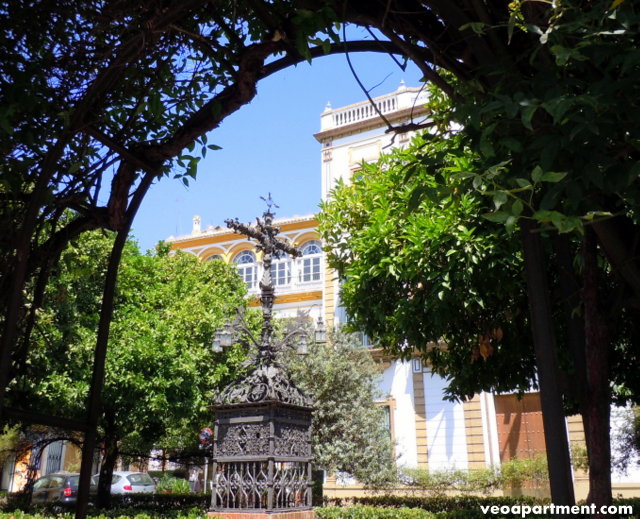 La Cerrajería, Plaza Santa Cruz
La Cerrajería, Plaza Santa Cruz
Just beyond is the Plaza Santa Cruz, which was once the site of one the Jewish quarter’s three synagogues, destroyed in the pogrom of 1391. It was replaced by the original parish church of Santa Cruz, demolished in turn in 1811 during the Napoleonic era to create the square as it is today. The rather strange metal sculpture in the centre is the Cruz de la Cerrajería with its serpents and four book-reading little figures on the corners, moved here from Calle Sierpes in 1921.
Down Calle Mezquita you come to Plaza de los Refinadores (the refiners). I love the circular benches around the palm trees (sadly, two have recently had to be cut down), which make a quiet and shady spot for a few minutes tranquil contemplation. The statue is of Don Juan Tenorio, the legendary womaniser, and was erected in 1975. Also of interest is the house on the corner with the big window balcony, designed for Luis Prieto by Aníbal González, who also designed the Plaza de España.
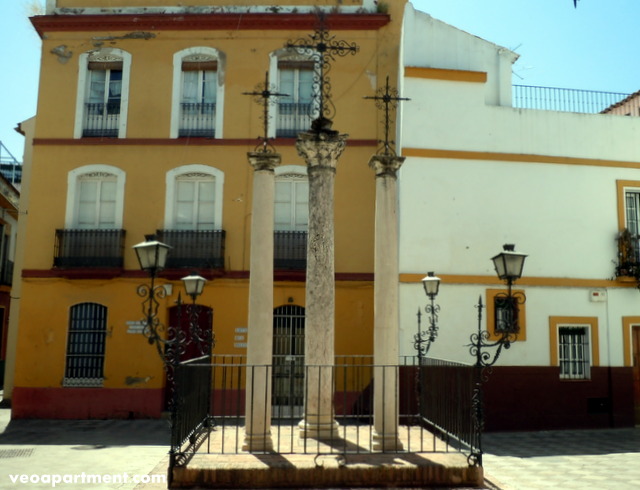 Las Cruces
Las Cruces
Through tiny Calle Mariscal you come to Plaza de las Cruces, surprisingly not named for the crosses on the columns, which arrived later than the name, but for the wooden crosses at the far end of the street. Turn left there and walk up the hill, and near the top you’ll find a little alley on your right. Through a door at the end is the tiny Plaza de la Escuela de Cristo, one of my favourites for its sheer unexpectedness.
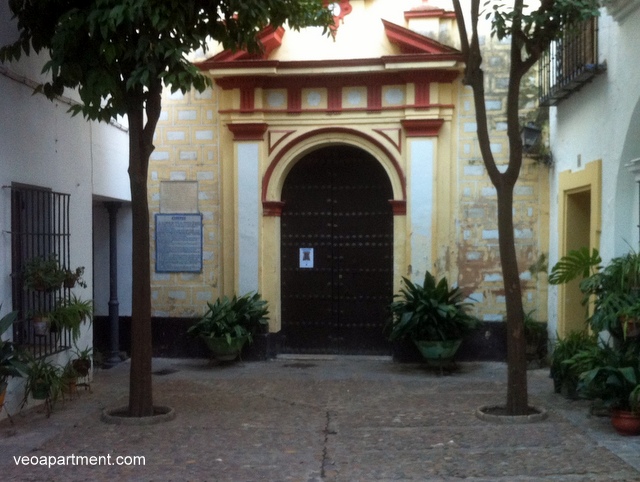 Plaza Escuela del Cristo
Plaza Escuela del Cristo
For a great base to explore the Santa Cruz, we have a wide range of quality holiday apartments around this enchanting neighbourhood.
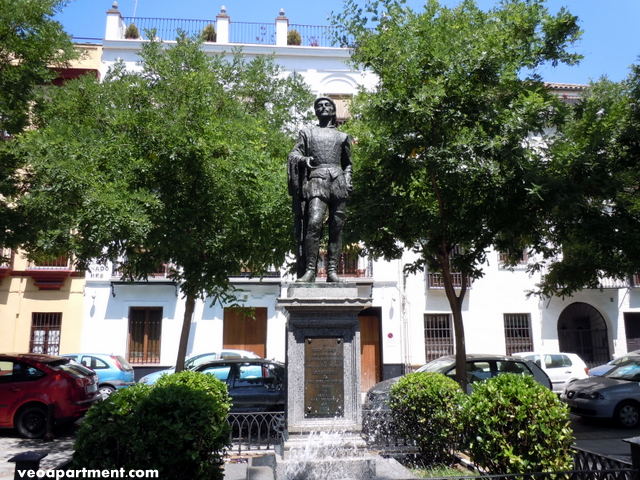
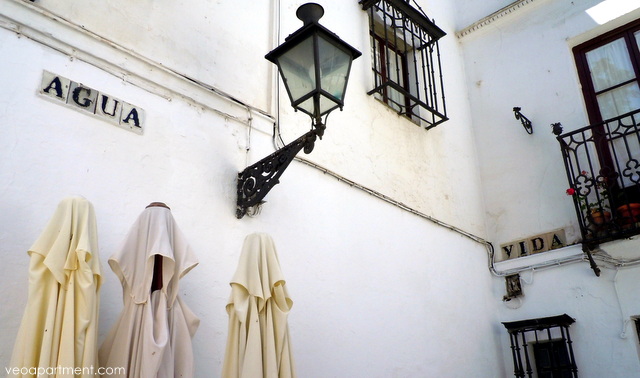 Corner of Agua & Vida (Water & Life)
Corner of Agua & Vida (Water & Life)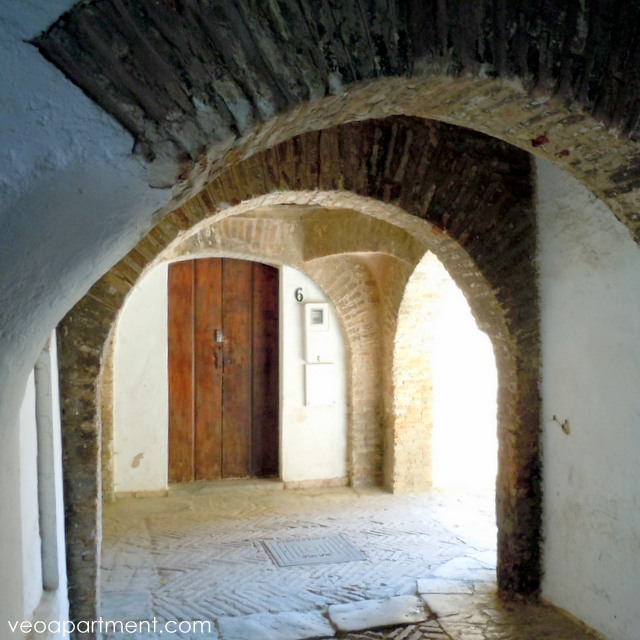 Casa number 6
Casa number 6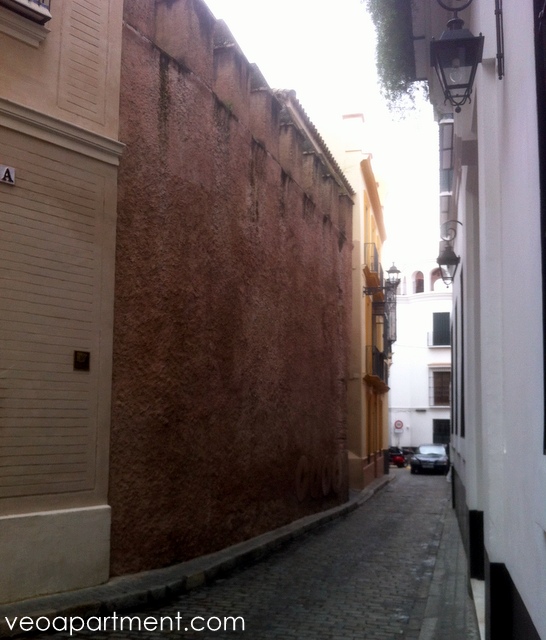 Wall of the Jewish Quarter
Wall of the Jewish Quarter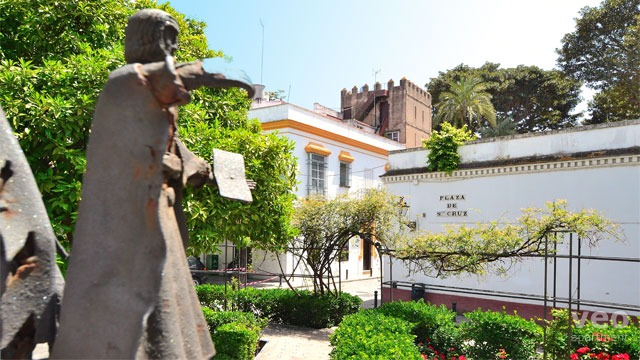 Plaza Santa Cruz
Plaza Santa Cruz